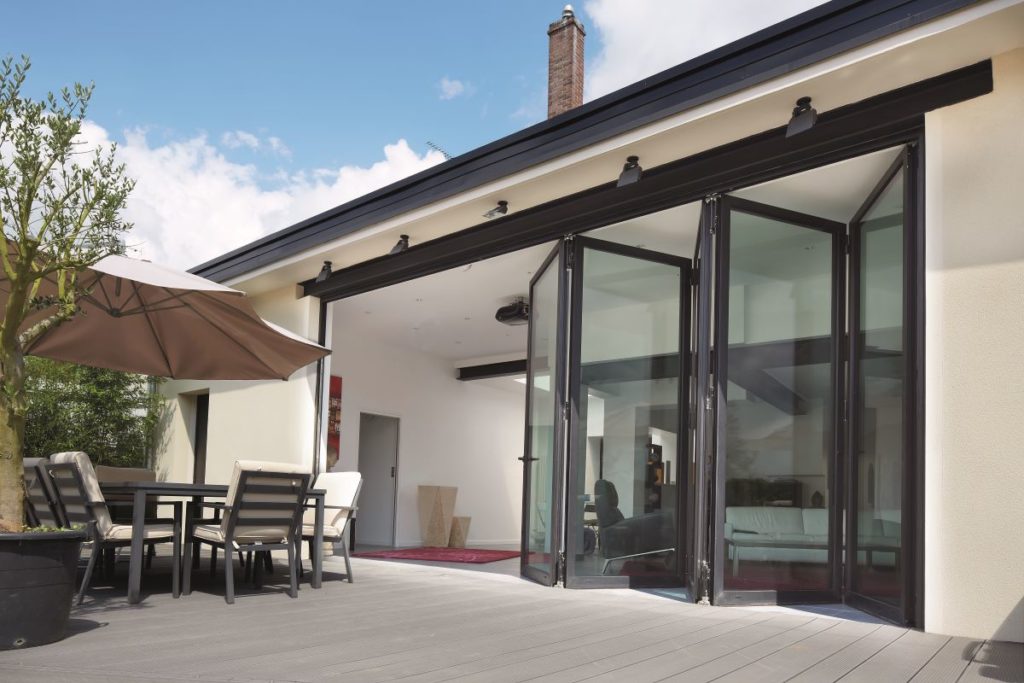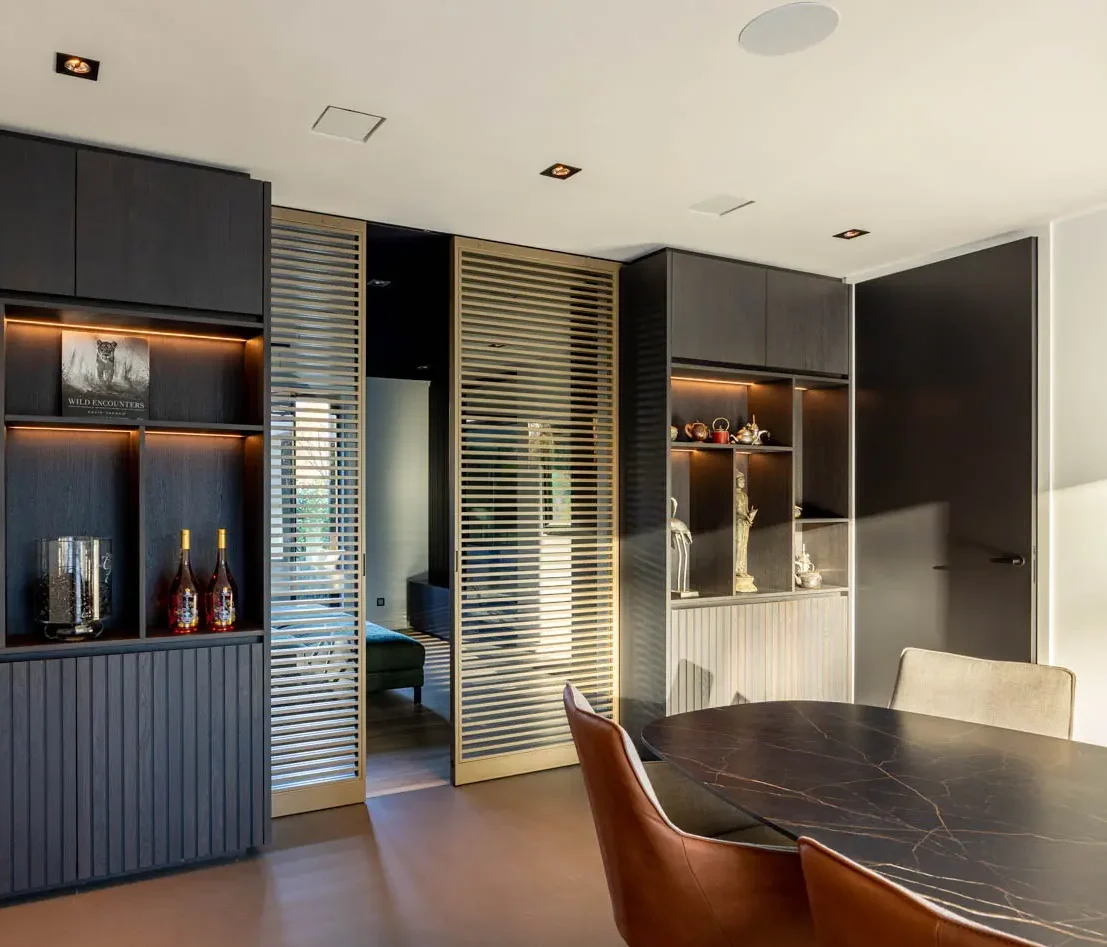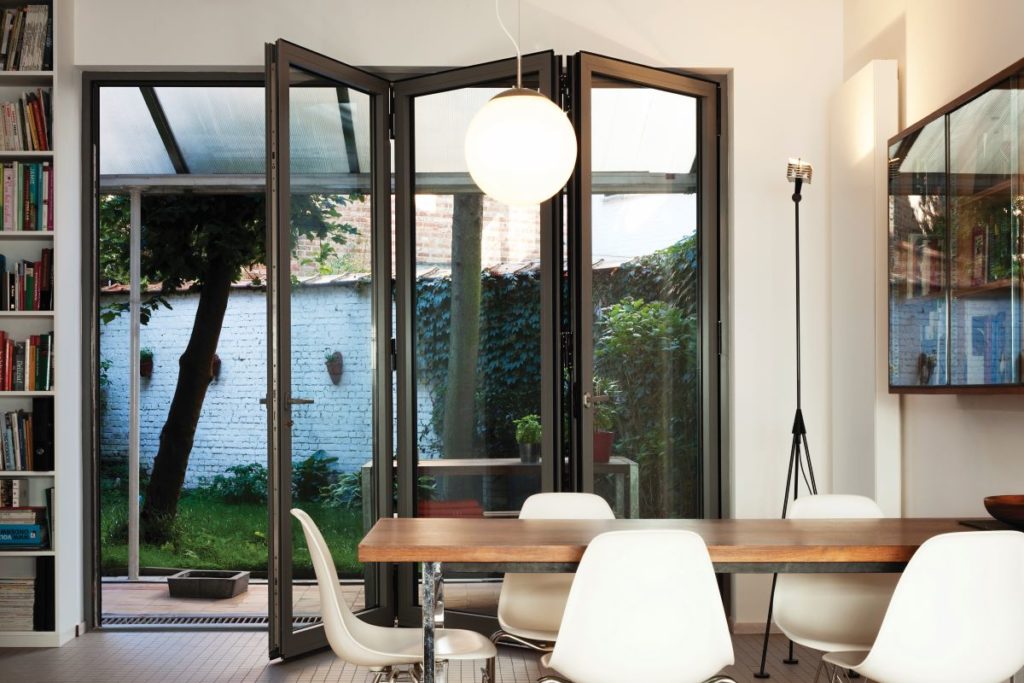There are many advantages and disadvantages to both inswing and outswing doors. Here’s everything you need to know.
One of the first major considerations when purchasing a new door is deciding whether it should swing outwards or inwards. Both options are available to you and there are pros and cons to each swing direction. At Clark Hall, we provide a comprehensive white-glove experience, working with you from beginning to end to make sure you get the custom door of your dreams. All of our high-quality doors are made from durable iron which means they require minimal maintenance and are built to last. They can even add value to your home!
So, before we dive into the nitty gritty of choosing between inswing and outswing doors, it’s important to understand the difference between them. For external doors, stand outside as if you’re about to enter your home. If the door swings outward to where you’re standing, it’s an outswing door. If you have to push the door to enter, it’s an inswing door. When it comes to internal doors, the room you’re about to enter is classed as the interior and the place you’re standing is the exterior. So, again, if you have to pull the door to enter the next room, it’s classed as an outswing door and if you have to push the door, it’s an inswing door.
Whether you have an idea of the direction you want your doors to swing, or you are simply looking for some advice, this guide will walk you through all the things you need to consider.
Advantages of Inswing Doors
You might be wondering if the swing direction of your door really matters. The answer is yes! Below are some of the benefits of inswing doors:
- Space utilization. Inswing doors are a better option for you if you’re tight on space. For instance, adding an inswing door to your bedroom will prevent the door from swinging out into the hallway and blocking people from passing. Inswing doors give the illusion of more space when used correctly.
- Security aspects. Inswing doors have their hinges on the inside, making it more difficult for intruders to gain access. However, this design can make the door more easy to kick in. If you are concerned about security, you can get security hinges or deadbolt locks to make unwanted access more difficult.
- Weather resistance. If you’re thinking about purchasing a custom exterior door, inswing doors are particularly beneficial for snow-prone areas as there’s less of a risk of you being trapped in your home due to snow buildup.
Disadvantages of Inswing Doors
As with everything, there are some disadvantages of inswing doors. These are:
- Difficulty in accessibility. Inswing doors make it more difficult for you to quickly leave your home in an emergency. It can also be much more difficult to access the home if someone has fallen against the door.
- Exterior damage potential. Inswing doors are more susceptible to strong winds and rain damage. There is also the risk of the door being blown inside the home in the event of a hurricane. If you’re considering designing an inswing door for the entrance to your home, you need to be aware that your door may require an extra seal to make it more water resistant. In addition, you can also consider adding a storm door for extra weather resistance, which will swing outward and can be either left-handed or right-handed.
Advantages of Outswing Doors
Outswing doors offer many benefits when compared to inswing doors. Below we discuss the main advantages of outswing doors:
- Reduction of water and debris infiltration. Outswing doors are more beneficial in areas with severe weather because of their threshold design, which prevents water and debris from entering the home. Inswing doors use a sweep gasket to seal out water and debris. However, because of the constant friction, this can cause them to wear quickly. Outswing doors close on something called a positive stop on the frame of the door and a compression gasket that requires minimal friction. Therefore, creating a more weather-tight seal.
- Easy accessibility. As the compression gasket on an outswing door doesn’t use friction, they tend to be easier to open than inswing doors. Although, in our modern age the difference is fairly minimal.
- Enhanced security. Outswing doors are notoriously more difficult to force open from the outside. So, they may offer enhanced security from burglars. Building regulations state that commercial buildings must have out swinging doors on the exterior because they have a tighter seal, reduce air leakage, and offer a wider range of security measures to deter intruders.
Disadvantages of Outswing Doors
Below are some of the potential disadvantages of installing outswing doors in your home:
- Space requirement. Outswing doors require more outdoor space than inswing doors to ensure they can be opened safely. However, they do allow more space and flexibility inside the home.
- Safety concerns. Outswing doors have their hinges positioned on the outside. This may present a security risk as the pins can potentially be removed by intruders. Furthermore, the hinges are constantly exposed to the elements which may make them more prone to rust. At Clark Hall, we use steel barrel hinges instead of traditional pin hinges to increase the security and durability of our doors. You can also look at our article on cleaning iron doors to extend the life of your new door.
Inswing vs Outswing: Choosing the Right Door
So, now you know the pros and cons of both inswing and outswing doors, but how do you know which one is right for you and your home?
Remember that everything from color and size to security are all important decisions. Below are a few tips and tricks to help you along your way to purchasing the best door for your specific needs.
Space
Sometimes, simply looking at the space available inside or outside your home can help you decide between an inswing and an outswing door. For instance, if you have a relatively large dining room coming off a narrow hallway, then an inswing door might be the best space-saving strategy.
The answer may not always be this simple, but it’s a good idea to visualize entering or exiting a room to determine how you want your doors to open. For example, patio doors would be considered outswing but when you’re inside, you are visualizing walking out onto your patio. Having doors that you have to pull into the room may create a more awkward and less dramatic effect.
Always look at the layout of your home as well as your family’s lifestyle to determine the best option. This strategy also works for custom interior doors depending on the space constraints of each room or hallway.
One of the first things you need to do is measure for new doors. This will help you decipher the amount of space you’ll need, whether your new door is inswing or outswing. This can seem like a daunting task but at Clark Hall, we will take the final measurements for you to ensure the best fit.
Security Considerations
Keeping your family safe is an essential part of building the perfect home. Both inswing and outswing doors have their perks when it comes to security, but they also have their downsides. For example, if you live in an area where snow buildup is the norm, then an inswing door is your best bet. However, outswing doors are generally more robust when it comes to forced entry attempts and high winds.
Building Codes
Depending on where you live, there may be particular building codes that you need to adhere to when adding a new exterior door to your home. These can include the way your door swings open to allow for a quick exit in emergencies. So, it’s always best to check with your local authority or you can check out the International Building Code. In addition, you can discuss your concerns with one of our experts at Clark Hall who will be happy to offer you advice.
Design and Style
An attractive modern front door design can really set the tone for your home, as well as the design details. Internal doors also have a huge part to play in the aesthetics of your living area, especially if you have space constraints. For example, double front doors can add more drama as well as let in more light than single front doors. You also have the option of choosing sliding doors, custom French doors, or even pivot doors at the back of your home. There are so many types of doors to choose from, but Clark Hall will be with you every step of the way.
The Handing of Swing Doors
Both inswing and outswing doors can either be left or right- hand active doors. In general terms, you will have four basic options to choose from. These are:
- Inswing left. The hinges are on the left-hand side. So, when the door is opened, it will swing to the left upon entry.
- Inswing right. The hinges are positioned on the right-hand side of the door. Therefore, the door needs to be pushed inwards and will swing to the right on entry.
- Outswing left. The hinges are on the left of the door but the door needs to be pulled towards you to open it.
- Outswing right. The hinges are on the right-hand side of the door. The door will open out towards you as you are entering a room.
We understand that purchasing a new door can be a complex and confusing task, especially if you end up working with multiple companies. To put your mind at ease, Clark Hall works with you throughout the customization process to minimize stress and maximize the potential of your home with a beautiful new iron door.
Want to learn more? Contact one of our experts to learn more about our customization process and get recommendations on which door swing best suits your home.
Frequently Asked Questions
Is it better to have an inswing or outswing door?
Both inswing and outswing doors have their advantages, so there is no right or wrong choice. However, you might want to think about the space available in your home as well as the security risks of each door type depending on your concerns and the weather patterns in your area.
How do you know if a door is inswing or outswing?
An inswing door swings into your home or the room you want to enter. Whereas, outswing doors swing outward to your outdoor space. For example, if you want to go into a bedroom, you have to push an inswing door into the room itself. However, an outswing door will need to be pulled out into the hallway.
Is it OK to have an outswing exterior door?
It’s perfectly fine to choose an outswing exterior door. In fact, most building codes state that you must have an outswing door on commercial buildings because they reduce air leakage and therefore, are more energy efficient. However, there are certain circumstances where an inswing door may be better. For example, inswing doors are better for snow-prone areas because there’s less of a risk of you being trapped in your own home.






